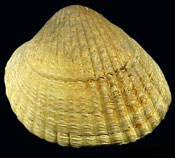Technique and design of pottery
Good clay could usually be found on the banks of the inland water courses. To make the clay resistant to fire and heating it was mixed with crushed granite. When the potter shaped a pot it was built up from thin ‘sausages’ of clay. Subsequently the surface was smoothed and then the vessel could be decorated. Neolithic pottery, in particular, is often decorated with beautiful, complex patterns. The patterns were impressed into the vessel surface. The impressed decoration could be made with small sticks, seashells, bones or fingernails. Cords of plant fibre were also used. Later the patterns could be filled in with a chalky pulp, which contrasted with the clay. Finally the pot was fired at temperatures between 500 and 700 degrees – perhaps in a bonfire kiln.


